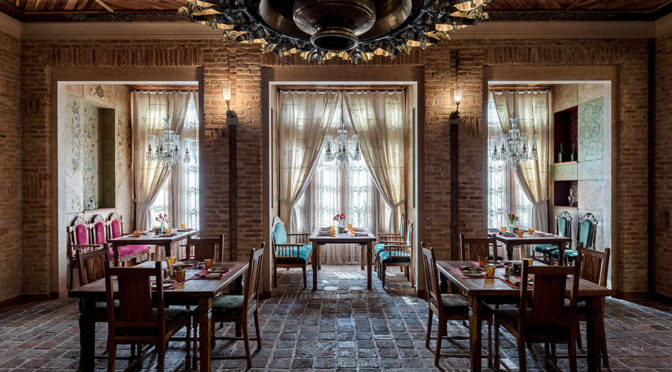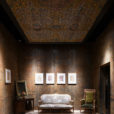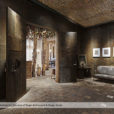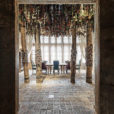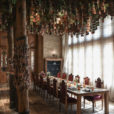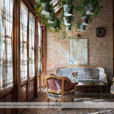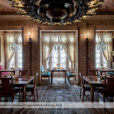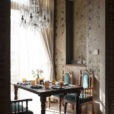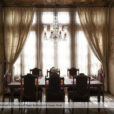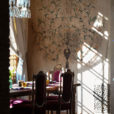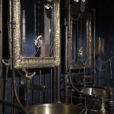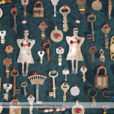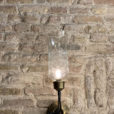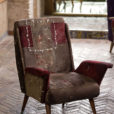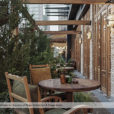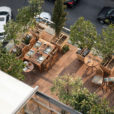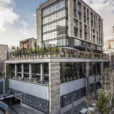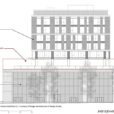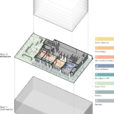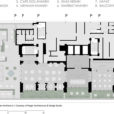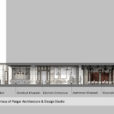رستوران حستوران
دفتر طرح و معماری پرگار (بهزاد حیدری، شیرین صمدیان)
موقعیت: تهران، ایران
تاریخ: ۱۳۹۶
مساحت: ۱۲۰۰ مترمربع
وضعیت: ساختهشده
کارفرما: شرکت مان مالک تجارت
همکاران طراحی: نسترن حدیدی، الینا وزینفرد، الناز غفوریان، نیکروز سیدی
سازه: جلالالدین سجادیان
تاسیسات مکانیکی: آرش مجابی، مجید بختیاری
تاسیسات الکتریکی: مهدی قندیلزاده
تیم اجرا: سهند مظلومی، احمد امامی، سهیل مظلومی، نیکروز سیدی، حسین کریمی
نظارت: بهزاد حیدری
طراحی و ساخت لوستر و چراغها: امیرعباس کاشف
طراحی و ساخت پارچه: سودابه مظفری
طراحی نقاشی برجسته دیواری: غزال حیدری
طراحی ظروف: دفتر طرح و معماری پرگار
طراحی و ساخت تجهیزات سرویس بهداشتی: امیرعباس کاشف
طراحی و ساخت ظروف دکوراتیو: دانیال زیرک
طراحی و ساخت المانهای دکوراتیو: شهریار رفیعی
گرافیک: لیلا عزیزی
عکس: حسین فراهانی، مهرداد عمرانی، رضا بهرامیزاده
«حستوران» تلاشی برای خلق فضایی «بیزمان و بیمکان» است، بدون اشارهای مستقیم به خاطرات فردی افراد. بنابراین، کار با شناخت زمان و مکان از دیدگاه فرد ایرانی آغاز شد. فرد ایرانی در عرصه جغرافیایی، تاریخی، فرهنگی و زیباییشناختی خود معتبر، خلاق و هنرمند است و این خلق خلاقانه همواره در تهاجم، تعریف مجدد مرزها و معیشتی ناپایدار صورت گرفته، تاثیر پذیرفته و تاثیرگذار بوده است و توانسته از چین تا آفریقا را در دوران گوناگون تغذیه کند و باعث شده است امروز با واژههایی مواجه باشیم، مانند معماری ایرانی، اسلامی، بومی، اقلیمی، تاریخی و …، و مردمی که دوست میدارند روی هر چیز نامی گذارند و برایش دستهای تعیین کنند.
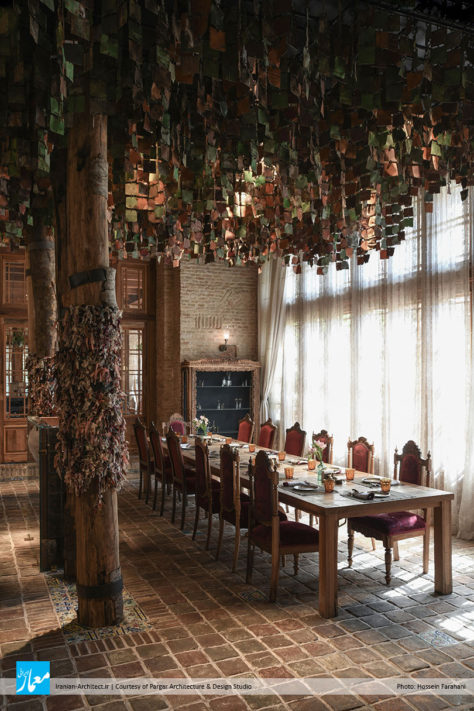
تلاش برای عدم نامگذاری فضا توسط کاربران، و در عین حال، درک همه آن با حواس مختلف، ما را به «همه و هیچ» رساند: حس همه داشتههای فرهنگی، تجربیات فردی و جمعی، فهم معیارهای زیباییشناختی و آنچه فرد حتی به عنوان داشته ژنتیکی دارد که دریابد، ولی نتواند بیان کند و درونی باقی بماند. خلق در این مسیر، بسیار کند، ولی یکباره بود. با «همه و هیچ» و «بدون زمان و مکان»، عناصر طراحی محک زده شد و هنرمندانی که در اجزاء، درک درستی از مفهوم کلی داشتند، همراهانی بودند در مسیر رسیدن به اهداف.
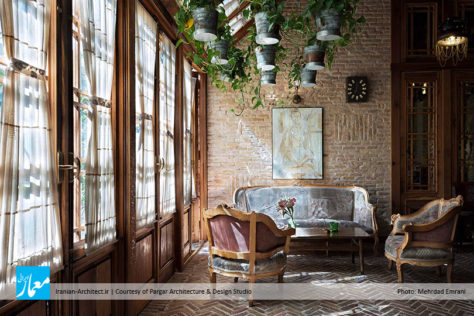
امروز در نگاه افرادی که به این فضا میآیند، نزدیکی و شوق را میبینم، ولی در بین هیاهوی جمعیت، نگاه دگرگونهای که به خلق این فضا داشتیم، با من تنها میماند.
Hestouran Restaurant
Pargar Architecture & Design Studio (Behzad Heidari, Shirin Samadian)
Location: Tehran, Iran
Date: 2017
Area: 1,200 sqm
Status: Completed
Client: MMT Group
Design Team: Nastaran Hadidi, E Fard, Elnaz Ghafourian, Nikrooz Seyedi
Structure Consultant: Jalal-al-din Sajadian
Mechanical Consultant: Arash Mojabi, Majid Bakhtiari
Electrical Consultant: Mehdi Ghandilzadeh
Construction Team: Sahand Mazlumi, Ahmad Emami, Soheil Mazlumi, Nikrooz Seyedi, Hossein Karimi
Supervision: Behzad Heidari
Design & Manufacture of Chandeliers & Lights: Amir Abbas Kashef
Design & Manufacture of Fabrics: Soodabeh Mozaffari
Wall Ornament Design: Ghazal Heidari
Tableware Design: Pargar Architecture and Design Studio
Design & Manufacture of Bathroom Equipment: Amir Abbas Kashef
Design & Manufacture of Decorative Containers: Danial Zirak
Design & Manufacture of Decorative Elements: Shahriar Rafiee
Graphic: Leyla Azizi
Photo: Hossein Farahani, Mehrdad Emrani, Reza Bahramizadeh
Hes + restaurant; The word ‘Hes’ (/ˈhɛs) in Farsi is equivalent to ‘Sense’, which in its essence, conveys feelings and sensations. Accordingly, the project intended to generate and create a ‘Timeless/Boundless Iranian Space’ without any apparent hint to the individual memories of their users. Hence, it’s an indispensable part of the process to go through the times and places, to define the user itself. The geographical and historical aspects of the millennium of the Persian heritage and culture marks innovation, authenticity and artistry approach of the people who endured invasion, redefining the borders and unsteady livelihood whilst have always created and had a major impact on the art and architecture, from Africa to China. As Iranian architects, we have become entangled with ‘Islamic,’ ‘traditional,’ ‘native,’ ‘climatic,’ and ‘historical’ architecture.
In an effort to create a space labeled as ‘everything yet nothing,’ while all the aesthetic, historical and nostalgic characteristics being distinguished by the user, nothing can be quite tagged to a reference. The experience to work with independent artistic teams – which in the past, have constantly collaborated with the architect as artisans, but nowadays are being pushed away to galleries – resulted in genuine design and creation of every element involved.

